B0041VYHGW EBOK (133 page)
Authors: David Bordwell,Kristin Thompson

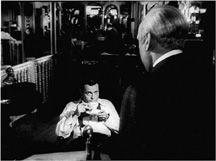
8.38 … and revelation of Kane.
Editing patterns can also suggest similarities between scenes, as when Welles compares two moments at which Kane seems to win public support. In the first scene, Kane is running for governor and makes a speech at a mammoth rally. This scene is principally organized around an editing pattern that shows one or two shots of Kane speaking, then one or two close shots of small groups of characters in the audience (Emily and their son, Leland, Bernstein, Gettys), then another shot of Kane. The cutting establishes the characters who are important for their views of Kane. Boss Gettys is the last to be shown in the scene, and we expect him to retaliate against Kane’s denunciation.
After his defeat, Kane sets out to make Susan an opera star and justify his interest in her to the public. In the scene that parallels Kane’s election speech, Susan’s debut, the organization of shots is similar to that of the political rally. Again the figure on the stage, Susan, serves as a pivot for the editing. One or two shots of her are followed by a few shots of the various listeners (Kane, Bernstein, Leland, the singing teacher), then back to Susan, and so on
(
8.39
,
8.40
).
General narrative parallels and specific stylistic techniques articulate two stages of Kane’s power quest: first his own attempt and then with Susan as his proxy.
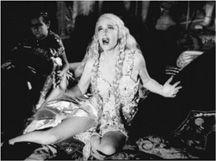
8.39
Citizen Kane:
Susan onstage in her opera debut …
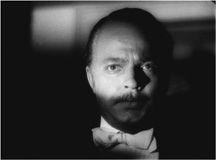
8.40 … and Kane in the audience.
As we’ve seen in
Chapter 7
, music can bring out parallels as well. For example, Susan’s singing is causally central to the narrative. Her elaborate aria in the opera
Salammbo
contrasts sharply with the other main diegetic music, the little song about “Charlie Kane.” In spite of the differences between the songs, there is a parallel between them, in that both relate to Kane’s ambitions. The “Charlie Kane” ditty seems inconsequential, but its lyrics clearly show that Kane intends it as a political song, and it does turn up later as campaign music. In addition, the chorus girls who sing the song wear costumes with boots and Rough Rider hats, which they place on the heads of the men in the foreground
(
8.41
).
Thus Kane’s desire for war with Spain has shown up even in this apparently simple farewell party for his departure to Europe. When Kane’s political ambitions are dashed, he tries to create a public career for his wife instead, but she is incapable of singing grand opera. Again, the songs create narrative parallels between different actions in Kane’s career.
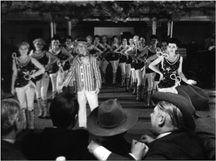
8.41 Costumes create a political reference in
Citizen Kane.
As we saw in examining
Citizen Kane
’s narrative, the newsreel is a very important sequence, partly because it provides a map to the upcoming plot events. Because of its importance, Welles sets off the style of this sequence from the rest of the film by distinctive techniques that don’t appear elsewhere in
Citizen Kane.
Also, we need to believe that this is a real newsreel in order to motivate Thompson’s search for the key to Kane’s life. The realistic newsreel sequence also helps establish Kane’s power and wealth, which will be the basis of much of the upcoming action.
Welles uses several techniques to achieve the look and sound of a newsreel of the period. Some of these are fairly simple. The music recalls actual newsreels, and the insert titles, outmoded in fictional films, were still a convention in newsreels. But beyond this, Welles employs a number of subtle cinematographic techniques to achieve a documentary quality. Since some of the footage in the newsreel is supposed to have been taken in the silent period, he uses several different film stocks to make it appear that the different shots have been assembled from widely different sources. Some of the footage was printed so as to achieve the jerkiness of silent film run at sound speed. Welles also scratched and faded this footage to give it the look of old, worn film. This, combined with the makeup work, creates a remarkable impression of documentary footage of Kane with Teddy Roosevelt, Adolf Hitler
(
8.42
),
and other historical figures. In the latter scenes of Kane being wheeled around his estate, the handheld camera, the slats and barriers
(
8.43
),
and the off-center framing imitate the effects of a newsreel reporter secretly filming Kane. All of these documentary conventions are enhanced by the use of a narrator whose booming voice also mimics the commentary typical in newsreels of the day.
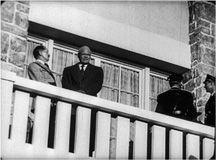
8.42 In
Citizen Kane,
costume, makeup, and …
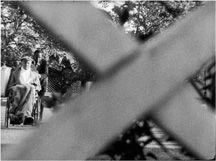
8.43 … cinematography simulate newsreel footage.
One of
Citizen Kane
’s outstanding formal features is the way its plot manipulates story time. As we have seen, this process is motivated by Thompson’s inquiry and the order in which he interviews Kane’s acquaintances. Various techniques assist in the manipulation of order and duration. The shift from a narrator’s present recounting to a past event is often reinforced by a
shock cut.
A shock cut creates a jarring juxtaposition, usually by means of a sudden shift to a higher sound volume and a considerable graphic discontinuity.
Citizen Kane
offers several instances: the abrupt beginning of the newsreel after the deathbed shot, the shift from the quiet conversation in the newsreel projection room to the lightning and thunder outside the El Rancho, and the sudden appearance of a screeching cockatoo in the foreground as Raymond’s flashback begins
(
8.44
).
Such transitions create surprise and sharply demarcate one portion of the plot from another.
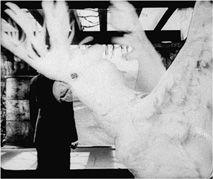
8.44 A shock cut in
Citizen Kane.
The transitions that skip over or drastically compress time are less abrupt. Recall, for instance, the languid images of Kane’s sled being gradually covered by snow. A more extended example is the breakfast table montage (segment 6) that elliptically traces the decline of Kane’s first marriage. Starting with the newlyweds’ late supper, rendered in a track-in and a shot/reverse-shot series, the sequence moves through several brief episodes, consisting of shot/reverse-shot exchanges linked by superimpositions of lighted windows whizzing by. (The effect resembles the transitional device of the
whip pan
, a fast panning movement.) In each episode, Kane and Emily become more sharply hostile. The segment ends by tracking away to show the surprising distance between them at the table.
The music reinforces the sequence’s development as well. The initial late supper is accompanied by a lilting waltz. At each transition to a later time, the music changes. A comic variation of the waltz follows its initial statement and then a tense one; then horns and trumpets restate the Kane theme. The final portion of the scene, with a stony silence between the couple, is accompanied by a slow, eerie variation on the initial theme. The dissolution of the marriage is stressed by this theme-and-variations accompaniment. A similar sort of temporal compression and sonic elaboration can be found in the montage of Susan’s opera career (segment 7).
